

AeroPress, Pour-Over, French Press: What’s the Best Way to Make Coffee?
Summary
This article explores various methods of brewing coffee, from traditional drip to modern AeroPress, discussing each method’s pros, cons, and the impact of factors like bean type, grind size, and water quality on the final taste. It emphasizes personal preference in choosing the right method, balancing flavor, convenience, and equipment cost.
Reflection Questions
- How does your preferred method of brewing coffee reflect your lifestyle or values?
- Considering the impact of bean type, roast, and grind size, how could you experiment with these variables to enhance your coffee experience?
- How do environmental and cost factors influence your choice of brewing method?
Journal Prompt
Reflect on your coffee brewing routine. What does this ritual mean to you, and how does it fit into your daily life? Consider how exploring different brewing methods could add variety or improve this essential part of your day.
We have all tried the teas and energy drinks, but there truly is no substitute for freshly brewed coffee. With its rich aroma and energizing properties, coffee has garnered a universal appeal that transcends cultures, continents, and centuries. From the bustling streets of Istanbul, where the thick, potent Turkish coffee reigns supreme, to the cozy cafés of Paris that serve espresso with unmatched finesse, coffee is more than just a beverage—it’s a global phenomenon that nurtures community, art, and conversation. However, most of us have participated in debates about the best method to brew this beloved drink. Purists argue for the traditional approaches that highlight coffee’s complex flavor profiles, while modernists embrace the convenience and innovation of new brewing technologies. By experimenting with different methods, women can not only participate in this ongoing conversation but also carve out their own coffee rituals. Let’s explore popular coffee brewing methods. Please do let us know in the comments below if you have a favorite!
The Basics of Brewing Coffee


The foundation of a great cup of coffee begins with high-quality beans. The variety, origin, and conditions under which coffee beans are grown can significantly influence their flavor profiles. Beans of superior quality offer a more distinct and refined taste, allowing the nuances of their specific region to shine through. Selecting high-quality beans is the first step in ensuring that the coffee not only meets but exceeds expectations, providing a rich and satisfying experience.
Arabica vs. Robusta
The two most common coffee species, Arabica and Robusta, differ significantly in taste, growing conditions, and price. Arabica beans are known for their smooth, complex flavor profiles, often featuring hints of fruit and sugar, with a higher acidity compared to Robusta. Robusta beans, on the other hand, tend to be stronger, more bitter, and contain more caffeine. They are typically grown at lower altitudes and are generally less expensive. Understanding these differences can help in choosing the right bean for one’s taste preferences.
The Impact of Roast Profiles on Flavor
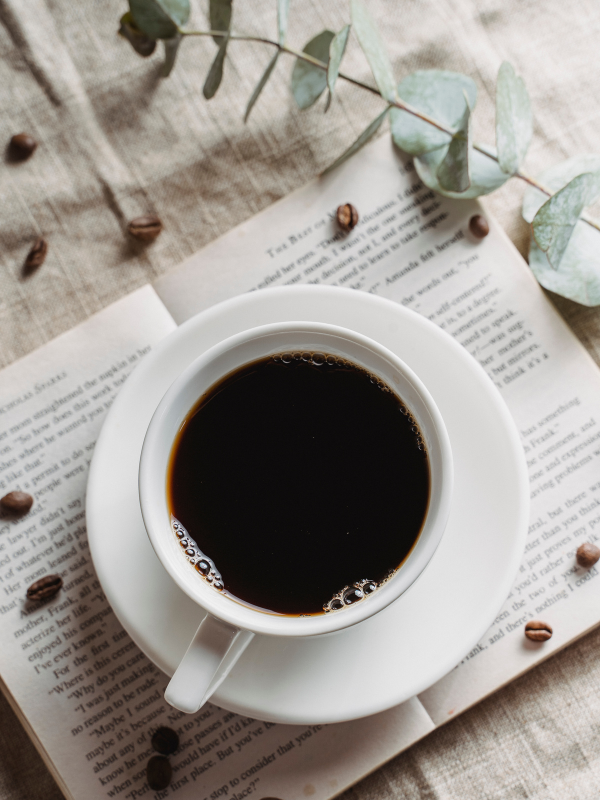

Roast profiles have a profound impact on the flavor of coffee. Light roasts preserve the original flavors of the bean, often resulting in a more acidic taste, whereas medium roasts offer a balance, highlighting the bean’s natural characteristics with a more rounded acidity. Dark roasts, known for their bold, rich flavor, tend to have less acidity and a heavier body, often with a bitter or smoky taste. The choice of roast can dramatically alter the coffee’s final taste, making it crucial to match the roast profile with the desired flavor outcome.
The Role of Water Quality and Temperature
The quality and temperature of water used in brewing coffee play critical roles in the extraction process. Impurities in water can alter the taste of coffee, masking its delicate flavors. Temperature affects extraction speed and efficiency: water that’s too hot can over-extract, leading to bitterness, while water that’s too cool may under-extract, resulting in a weak, sour cup. Ideally, water temperature should be between 195°F to 205°F for optimal extraction.
Grind Size for Different Brewing Methods


The grind size of coffee beans is pivotal in brewing, as it affects the surface area exposed to water and, consequently, the extraction rate. Fine grinds are best for espresso, where a quick extraction is needed, while coarse grinds are suited for methods like the French press, which allow for longer steeping times. An appropriate grind size ensures that the coffee is neither over nor under-extracted, achieving the desired balance and flavor.
Comparing Different Coffee Brewing Methods
Drip Brew (Coffee Maker)
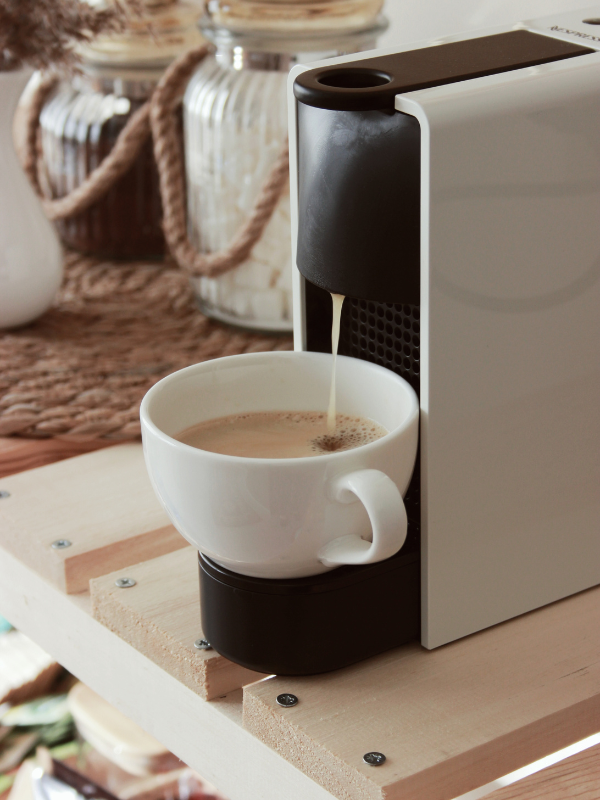

Pros: As we all know, a drip coffee maker is highly convenient, making it ideal for daily use, especially in busy households or offices. They can brew multiple cups of coffee at once, and many models offer programmable settings, allowing users to set their coffee to brew just in time for their morning routine. Just add your hot water and ground coffee, and you’re good to go! The process is straightforward and user-friendly, requiring minimal expertise to achieve consistent results.
Cons: The flavor produced by drip brewers is often considered less robust compared to other methods due to the inability to fully control variables like temperature and brew time. Additionally, coffee makers require regular cleaning and maintenance to prevent mold and mineral buildup, which can affect the taste of your brewed coffee. However, if you use freshly roasted beans, you can ensure a better flavor from your drip coffee machine.
Espresso Machine
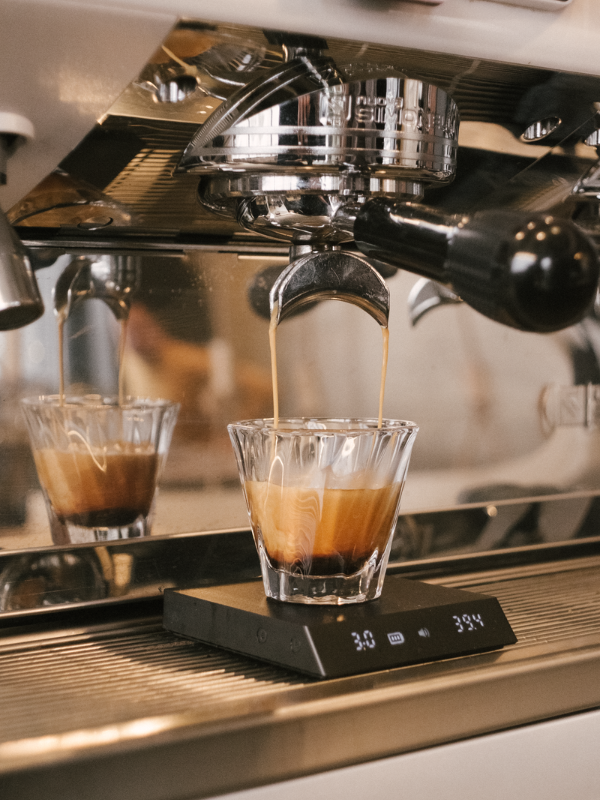

Pros: Espresso delivers a concentrated, rich coffee flavor that serves as the base for a variety of coffee drinks, such as lattes and cappuccinos. The method extracts coffee’s full flavor profile quickly due to the high pressure used, resulting in a complex and aromatic cup of coffee. Espresso machines also offer a level of control over variables, allowing for customization.
Cons: The main drawbacks are the cost of espresso machines, which can be quite high, and the learning curve involved in mastering the technique, which requires super finely ground coffee beans, equipment, and more. Maintenance and cleaning of the machine can also be more demanding compared to simpler brewing methods.
French Press (Press Pot or Plunger Pot)
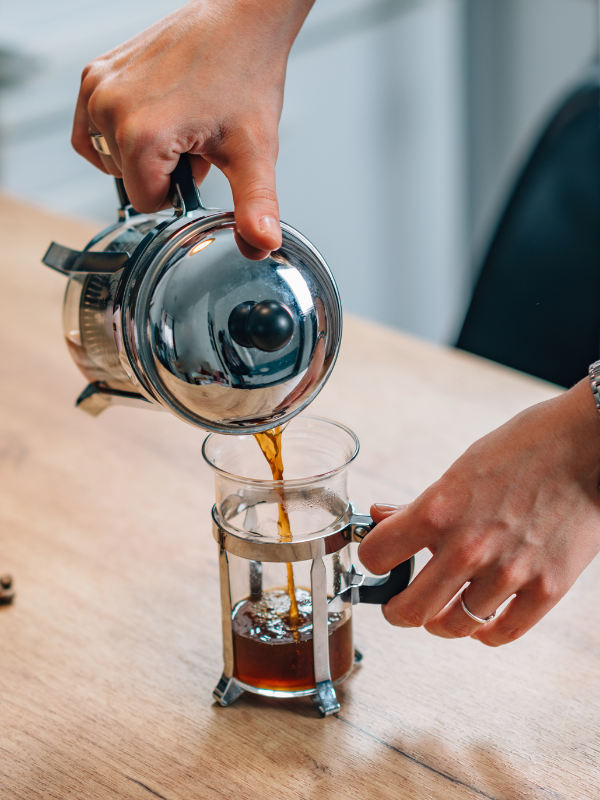

Pros: The French Press allows for full immersion brewing, which can extract a more complete flavor profile and oils from the coffee, resulting in a richer and fuller-bodied cup. It’s a simple, manual method that doesn’t require electricity, making it portable and great for use anywhere.
Cons: French press coffee grounds must be coarse to avoid slipping through the press filter, which can be a limitation if a finer grind is preferred. Cleanup can be a bit messy, as spent coarsely ground coffee grounds are left in the bottom of the pot. Additionally, the potential for over-extraction is higher, which can lead to bitterness if the coffee is left steeping too long.
Fuel your creative fire & be a part of a supportive community that values how you love to live.
subscribe to our newsletter
*please check your Spam folder for the latest DesignDash Magazine issue immediately after subscription


AeroPress
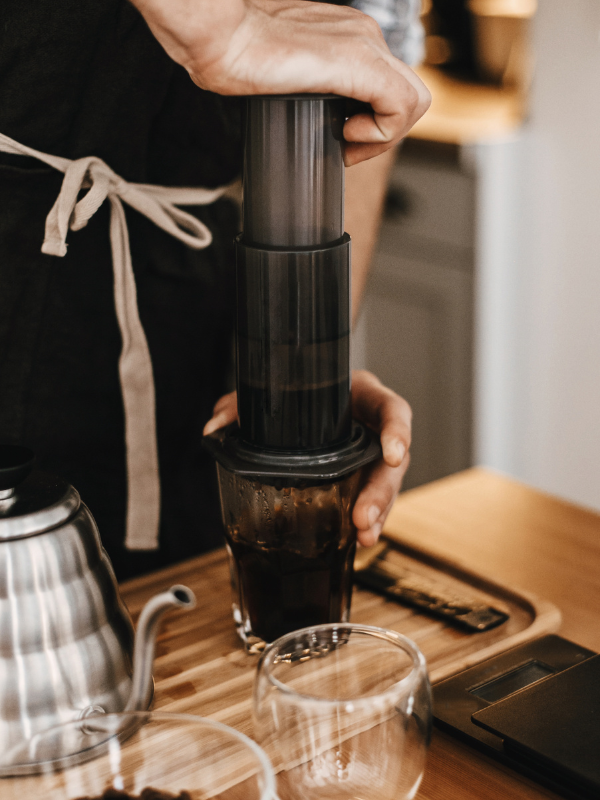

Pros: The AeroPress is highly versatile, capable of making espresso-like coffee or regular American coffee. It’s fast, with brewing times typically under a minute, and easy to clean. The compact and durable design makes it ideal for traveling.
Cons: It can only make one or two servings at a time, making it less convenient for serving multiple people. Some users may find the manual pressure application a bit cumbersome compared to the push-button convenience of electric machines.
Pour-Over or V60
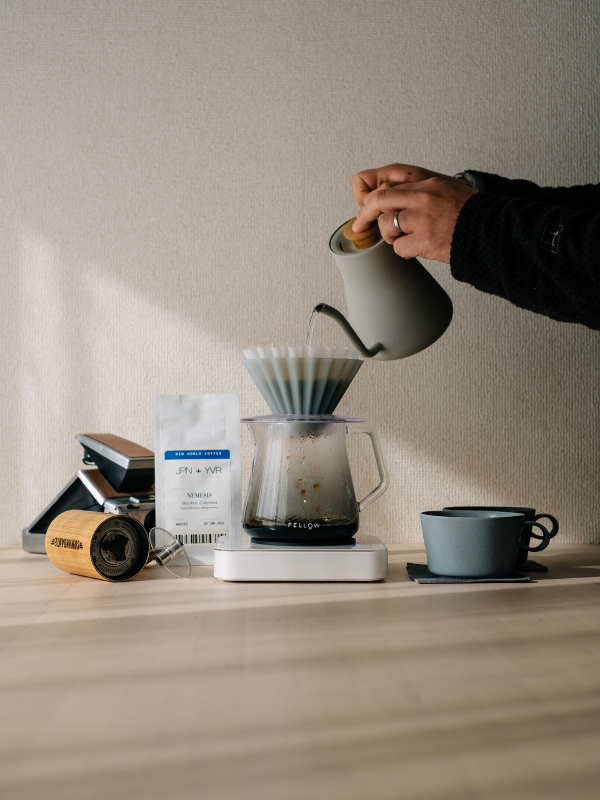

Pros: Pour-over brewing offers meticulous control over brewing variables, including water temperature, speed, and distribution, allowing for a tailored coffee experience. This method highlights the nuanced flavors of the coffee, often resulting in a cleaner and more complex cup compared to automatic drip machines. Our Editor-in-Chief and her husband always use the pour-over method!
Cons: It requires a bit more skill and attention to detail, as the quality of the final cup heavily depends on the pouring technique. Additionally, it’s more time-consuming, making it less ideal for those in a rush.
Moka Pot (Stovetop Espresso Maker)
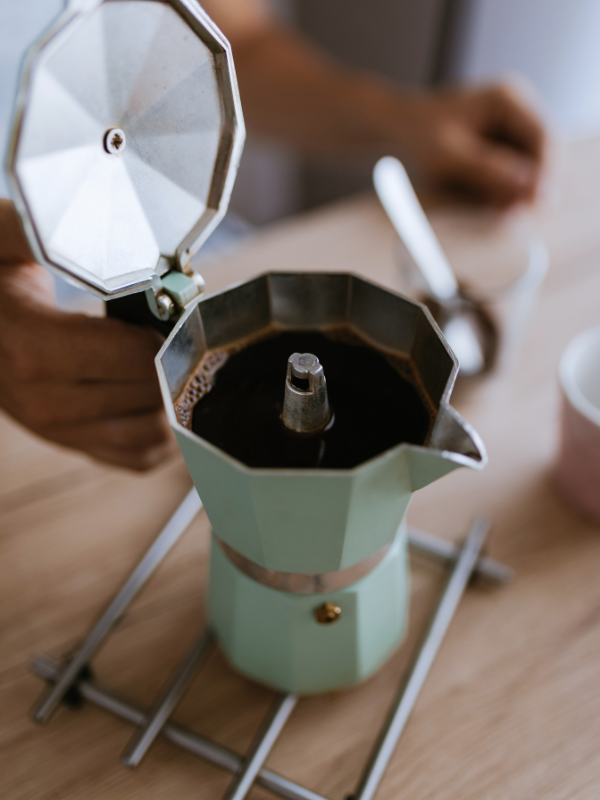

Pros: Moka pots are affordable and durable, offering a method to make espresso-like coffee without the need for an expensive machine. They’re compact and easy to use, producing a strong and rich brew.
Cons: The coffee can sometimes have a bitter taste if not brewed correctly, as controlling the temperature and avoiding over-extraction can be challenging. Moka pots also require careful maintenance to prevent them from becoming clogged or corroded.
Cold Brewing Method
Pros: Cold brew coffee is known for its smooth, mild flavor and low acidity, making it easier on the stomach. It’s versatile, serving as a base for both cold and hot beverages. The concentrate can be made in large batches and stored in the refrigerator for several days.
Cons: The brewing process is time-consuming, requiring 12 to 24 hours. It also requires more coffee grounds than other methods, which can be less economical.
Siphon (Vacuum Pot)
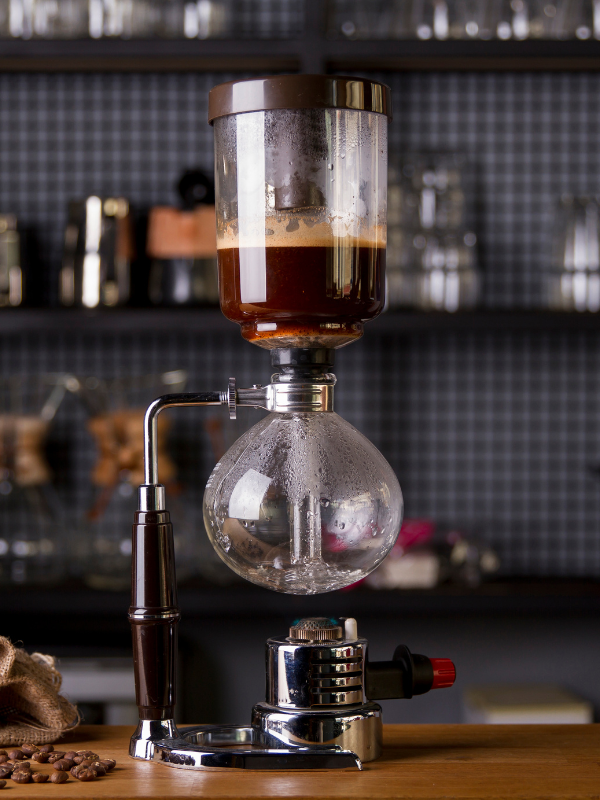

Pros: Siphon brewing is a visually impressive process that often results in a clean, vibrant cup of coffee, showcasing the coffee’s flavor profile beautifully. It allows for precise temperature control and an even extraction.
Cons: Siphon pots can be expensive and fragile. The method requires a certain level of expertise and attention, making it less suitable for those seeking convenience. The cleanup process can be complex due to the equipment’s design.
Turkish Coffee
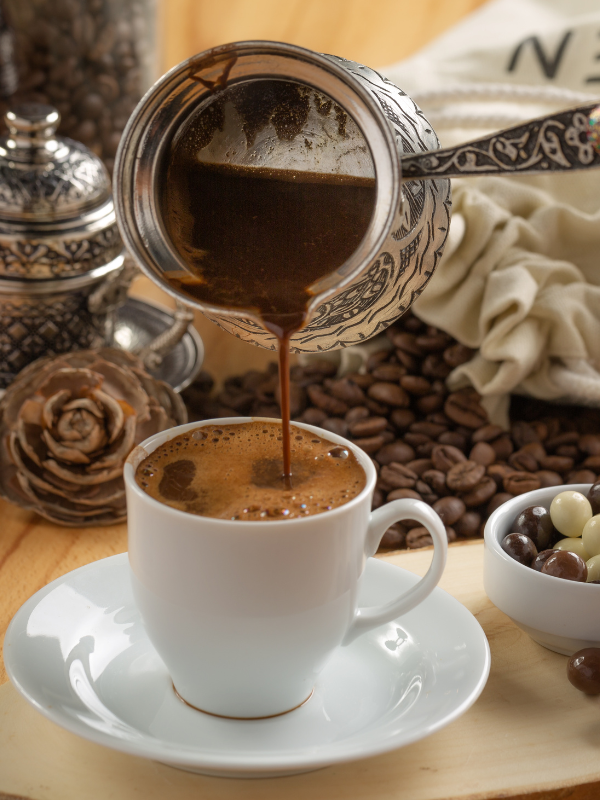

Pros: This method produces a unique, strong, and flavorful cup of coffee, deeply rooted in tradition. It allows for the addition of spices, offering a distinct taste. The equipment is simple and portable.
Cons: The fine grind can lead to a muddy texture if not settled properly. It also requires constant attention while brewing to prevent boiling over. The presence of grounds in your cup of coffee might make this coffee brewing method unpleasant for some drinkers.
Percolator
Pros: Percolators are great for brewing large quantities of coffee at once, making them suitable for group settings. Many appreciate the nostalgic aspect and robust flavor that percolation provides. They’re generally durable and easy to use, with both stovetop and electric models available.
Cons: The brewing process can easily lead to over-extraction, resulting in bitter coffee if not monitored closely. The coffee can also become too hot, further affecting the flavor negatively. Cleaning a percolator can be more cumbersome compared to other methods due to its multiple parts.
Instant Coffee
Pros: Instant coffee offers unparalleled convenience and speed, requiring only hot water to prepare. It’s lightweight and shelf-stable, making it perfect for travel or emergency kits. The uniformity of the product guarantees consistent taste.
Cons: The flavor and aroma of instant coffee often fall short when compared to freshly brewed options, lacking the depth and complexity that coffee enthusiasts seek. The production process removes many of the natural oils and compounds that give coffee its distinctive flavors.
Single-Serve Pod Coffee Makers (think Keurig)
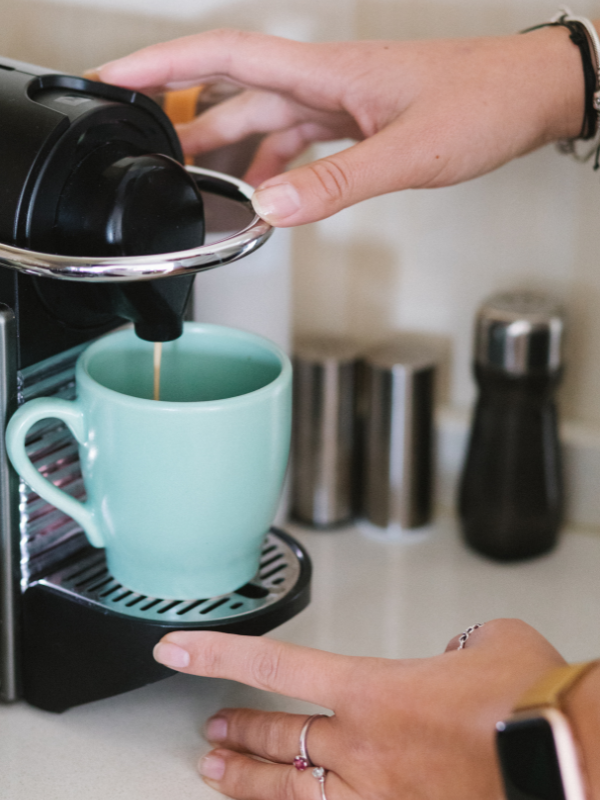

Pros: These machines provide a high level of convenience and speed, brewing a single cup of coffee at the push of a button with minimal cleanup required. They offer a wide variety of flavors and coffee types without the need to measure grounds or deal with filters.
Cons: The cost per cup is higher compared to other brewing methods, and the environmental impact of single-use pods is a significant concern. Critics also point out that the coffee from pods can lack the freshness and quality achieved with other methods, as the coffee in pods is pre-ground and packaged.
Factors to Consider When Choosing a Brewing Method


Choosing a brewing method often comes down to personal taste preferences regarding the coffee’s strength, acidity, body, and flavor notes. Some may prefer the strong, concentrated taste of an espresso, while others might enjoy the subtle nuances and lighter body of a pour-over coffee. Understanding one’s preferences in these areas can guide the selection of a brewing method that best suits their palate.
Time and Convenience: Assessing the Effort Involved in Each Method
The time and effort required to brew coffee vary widely among different methods. Busy lifestyles may lean towards the convenience of pod coffee makers or automatic drip machines, while those who enjoy the ritual of brewing may prefer manual methods like the pour-over or French press. Considering how much time and effort one is willing to invest in brewing can narrow down the options to find the most suitable method.
Equipment and Cost: Initial Investment and Maintenance


The cost of brewing equipment and its maintenance can influence the choice of brewing method. Some methods, like espresso, require a significant initial investment in high-quality machines, while others, such as the AeroPress or French press, are more budget-friendly. Additionally, the maintenance and upkeep of these machines should be considered to ensure longevity and consistent coffee quality.
Serving Size: Individual Cup vs. Large Quantities
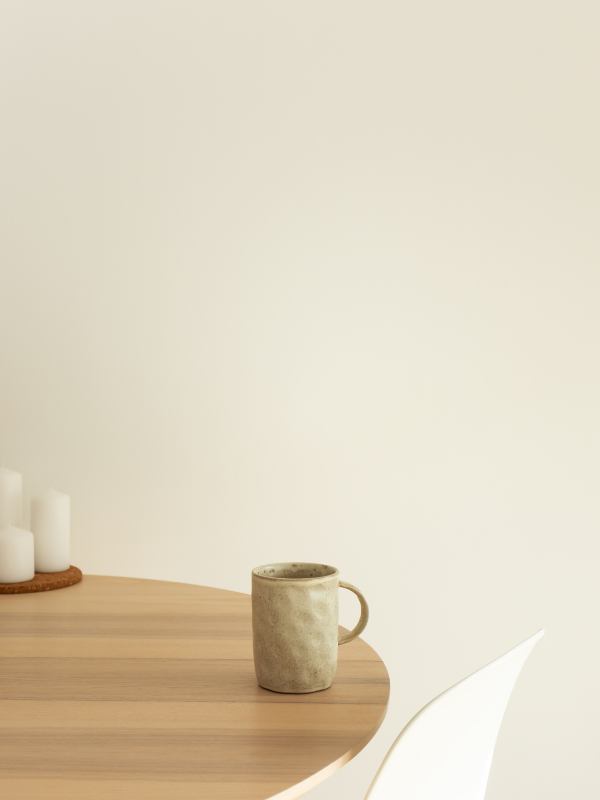

The amount of coffee needed at a time is another important factor. Single-serve methods like the AeroPress or espresso machines are great for individuals, while French presses or drip brewers can serve multiple people more efficiently. The choice of brewing method can be influenced by whether the aim is to enjoy a solitary cup of coffee or to cater to a group.
How Will You Brew Your Next Cup of Coffee?
Let us know in the comments below how you plan on brewing coffee tomorrow morning!
Design Dash
Join us in designing a life you love.
-
What is Tax-Loss Harvesting, Is It Legal, and Does It Build Wealth?
A legal and simple strategy, tax-loss harvesting helps you offset capital gains and grow your wealth by reducing your tax bill.
-
DesignDash Guide: Create the Ultimate Fall Capsule Wardrobe
Build a fall capsule wardrobe to streamline your style, save time, and support sustainability with versatile, high-quality pieces.
-
How to Support a Partner Who is Making a Major Career Change
Wondering how to be a supportive partner during periods of transition? Here’s how to care for your partner (and yourself) during this time.
-
How Dollar-Cost Averaging Can Help You Navigate Market Volatility
Learn how dollar-cost averaging (DCA) can help you grow your wealth with consistency and ease, even during market volatility.
-
Fall Meal Prep: Maximizing Space for Soups, Stews, and Bakes
From decluttering your pantry to creating a cozy prep station you’ll actually enjoy, here’s how to organize your kitchen for fall meal prep.
-
Looking to the Future? Maybe It’s Time to Refresh Your Firm’s Brand
Your interior design business shouldn’t have to rebrand every time you open a new studio or add a new service, but it might need a brand refresh.








